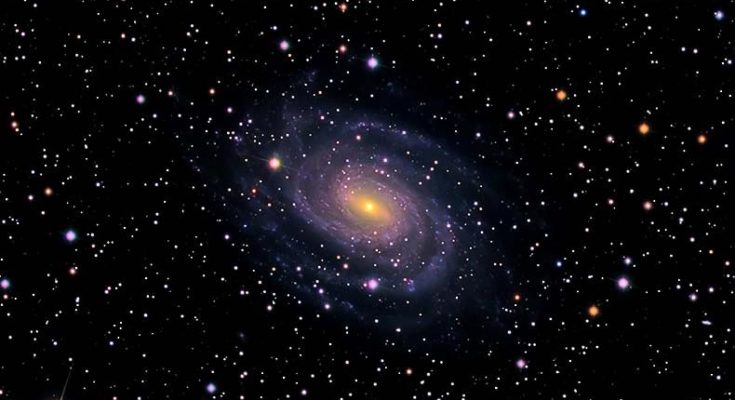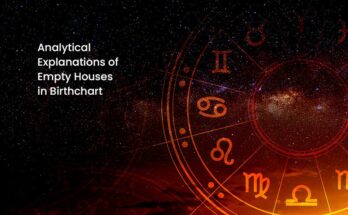The Astral Science is derived from the Vedas – it is not a gift of foreigners. Image Courtesy – https://clipartfest.com
‘Niharika’ is a Sanskrit word which refers to the ‘galaxy of Stars’. ‘Nakshatra’ literally means that which never decays, in Sanskrit it is, “Na chharati”. Nakshatras are fixed and always constant, from this word ‘constant’ constellation is derived. The nakshatra reflect the primordial level of the Zodiac belt, which lies beneath the twelve basic signs. The Nakshatras further divided the constellations into 27 segments of equal length. Each nakshatra occupies 13o 20’ in any Rashi. Multiplying this length by 27 equals the entire zodiacal belt of 360o.
Classical text of the Vedas says,
“Yo Iha Yajate, Amum Sa Lokam Nakshate Tan Nakashatranam Nakashatravam” (Taittiriya Brahmana-1.5.2)
Which means, one who offers worship here reaches the world of heaven beyond. That is the ‘Nakashatrahood’ of the nakshatra.
The root ‘naksh’ behind the term ‘Nakshatra’ means to approach, worship or attain, while ‘tra’ is a suffix suggesting instrumentality. The Nakashatra were defined originally as means of connecting with cosmic power and extending our human mind to the cosmic consciousness.
The term nakshatra was initially referred to The ‘Rig Veda’, oldest of the four Vedas or sacred texts of Hinduism which has been dated as early as 4000 BCE by recent archaeological discoveries in India. The names of several Nakashatras occur in the Rig Veda, like Tishya (Pusya ), Ashwini and Revati, but not a complete listing of them. Complete listing occurs in the ‘Yajur Veda’ (Taittiriya Samhita-IV.4.10) and in the ‘Atharva Veda’, both of which begins with krittika (the Pleiades). The ‘Atharva Veda’ places the ayana or solistice in Magha (Regulus or Early Leo), reflecting a dating as early as 2000 BCE or even prior to that.
Early astronomical texts like ‘Taittiriya’ and ‘Satapatha’ Brahmans names the Nakshatras after their ruling Vedic deities. They reflect the older Gods of the Vedas like ‘Indra’, ‘Agni’ and ‘Soma’.
According to the great German scholar Prof. Maxmuller, Indians are not indebted to other countries for their knowledge of ‘Astronomy’ & ‘Astral Science’. Lokmanya Bal Gangadhar Tilak in his book, ‘Orion‘ has written, India derives its knowledge of nakshatra from Vedas. This knowledge is about 5000 years old. Indian astrologers of those times were highly proficient in Astral Science. This branch of knowledge did not come from Babylon, Egypt or Yunnan, as it is claimed.
The Moon nakshatra is equally important for all aspects of ‘Mundane Astrology’ and for better understanding of social fluctuations from stock markets to the voting patterns. Most of the systems of planetary periods or dashas, like the primary 120 years cycles of ‘Vimshottase Dasha Prakaran‘ are based upon the Moon Nakshatra and its planetary ruler for their calculation.
“Krittikadi Bharanyantam” – Artharva Vedas
This refers to the ‘Vimshottori Dasha Prakaran’ from Krittika Nakshatra. Moon cycles in zodiac completes in 27 days 07 hours 43 minutes 11.6 secs. In the Vedas, the term ‘Nakshatra’ also refers to the Sun, Moon or planets or the main heavenly lights. In this regard, the Vedas speak of 35 lights i.e. 28 Nakshatras including ‘Abhijit’ and 7 planets.
During ‘Vedanga Jyotish Kal’ i.e. before BCE 06th or 07th centuries. The constellation started with Dhanistha. In every 72 years, there is an increase of 1° degree in the ayanamsha (ayan ka angsha) Utlarayan & Dakshinayan,
In 1918 – The equinox was Fixed at 23° 27‘ in Aries
In 1947 – The equinox was Fixed at 23° 26’ 46” in Aries
In 01/01/1997 – The equinox was Fixed at 23° 26’ 13“ in Aries
In 2016 – The equinox was Fixed at 24° 05‘ 16” in Aries
In 2440 – it is expected to reach into Aquarius, this concept is termed as “The Precession of Equinox”.
To conclude this article it is very interesting to mention that up to the ‘Mahabharata’ period, there appears to be no existence of ‘Rashi’ as it was evident when ‘Angaraj Karna’ is explaining the astral position to ‘Lord Shree Krishna’ –
“Shani in Rohini is afflicting Mangal. Mangal positioned in Jyestha is conjugating with Anuradha in a retrograde position”. All these above textual evidence establishes the ‘Astral Science’ is derived from the ‘Vedas’ and its not a gift of the foreigners.





